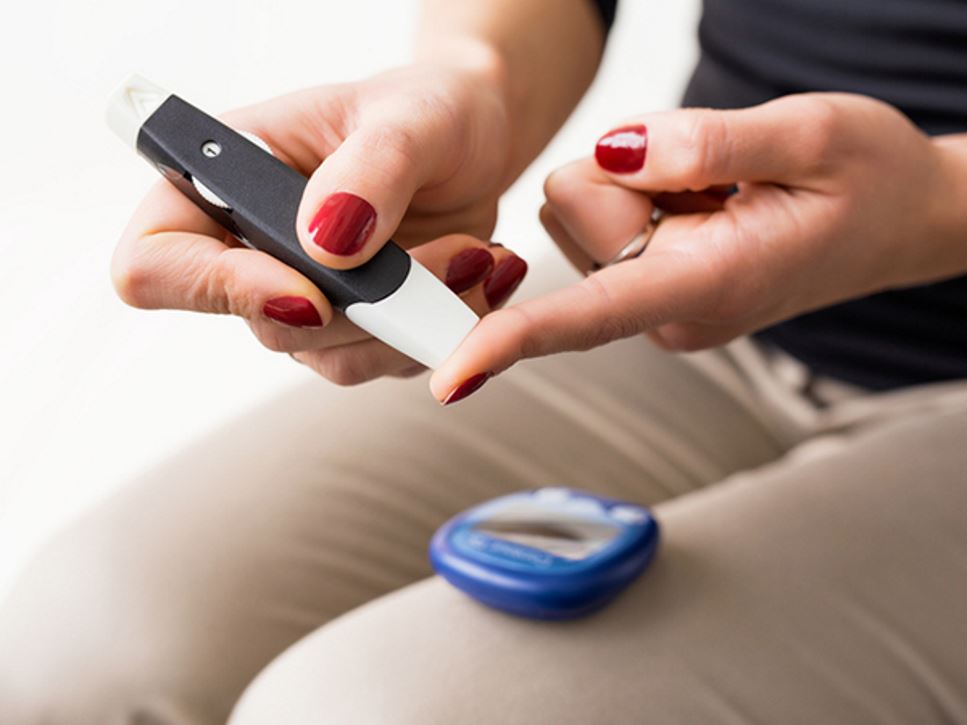A whopping 37.3 million Americans have diabetes. And, even more people are unaware that they are at high risk for developing prediabetes or progressing to Type 2 diabetes. Prediabetes is often considered a transition step to Type 2 diabetes, but with important lifestyle changes, Type 2 diabetes can be prevented or delayed.
In all forms of diabetes, the body's ability to make or properly use insulin is affected. Insulin is a hormone that is made by the pancreas, and it helps your cells store and use energy from food. If you have diabetes, glucose collects in the blood but doesn’t get transported into the cells. Thus, your body is not getting the energy it needs. Also, the high levels of glucose circulate through the body, damaging cells along the way.
Diabetes increases the risk of having a heart attack or stroke and may lead to kidney, eye and nerve damage.
Types of Diabetes
The causes of diabetes are complex and still not fully known. Although food doesn't cause diabetes, it is part of the strategy for managing the disease.
There are three main types of diabetes:
- Type 1 diabetes: The pancreas either makes no or too little insulin. Type 1 is an autoimmune disease that often begins in childhood. The onset is sudden. Just 5.7% of adults with diabetes have Type 1 and take insulin. It cannot be prevented through diet or lifestyle, though they can be helpful in managing this condition.
- Type 2 diabetes: The pancreas does not make enough insulin or the body doesn't use the insulin it makes. Type 2 usually develops slowly. Nearly 89% of individuals with this type of diabetes have a body mass index (BMI) that is considered to be overweight or obese. Other risk factors include family history of diabetes, a history of gestational diabetes, impaired glucose metabolism, older age and physical inactivity.
- Gestational diabetes: With gestational diabetes, the body doesn’t make enough insulin during pregnancy. It is thought that other hormones may block the action of insulin. Gestational diabetes often goes away after the baby is born. However, women who develop this type of diabetes are at greater risk for Type 2 diabetes later in life.
How to Reduce Your Risk for Diabetes
You can prevent or delay Type 2 diabetes by making changes to your eating style, being physically active and by losing a certain amount of weight if you have a BMI that is categorized as overweight or obese. These steps also lower your risk for diabetes complications. Visit a registered dietitian nutritionist to learn about lifestyle changes that can reduce your risk for Type 2 diabetes.
Signs, Symptoms and Testing
Signs and symptoms of diabetes include going to the bathroom frequently, being unusually thirsty, losing weight without trying, feeling tired, blurred vision, frequent illness or infection and poor circulation such as tingling or numbness in the feet or hands. If you have these symptoms, see a doctor immediately. You may need to have one of the following tests for diabetes:
- Fasting Plasma Glucose: Indicates the amount of glucose in a sample of blood taken when a person is fasting (often they haven’t eaten anything for eight to 12 hours).
- A1C Test: Measures a person's average blood glucose range over the past two to three months. This test shows the amount of glucose that sticks to the red blood cell.
- Oral Glucose Tolerance Test: Results of this test show how the body uses glucose over time. This test is performed by a health care professional after an overnight fast. A blood sample is taken, the patient drinks a high-glucose beverage and then a blood sample may be taken every hour for up to three hours after drinking the beverage.
Managing Blood Glucose Levels
If you’ve been diagnosed with diabetes, a registered dietitian nutritionist, or RDN, will work with you and other members of your health care team to help you manage your blood glucose levels and reduce your risk of possible complications. Some goals your care team may work with you on include:
- Keeping blood glucose levels within a normal range or as close to normal as possible, which can prevent or reduce complications.
- Keeping blood pressure in normal ranges.
- Working to get healthy cholesterol levels.
People with Type 1 diabetes need daily insulin injections or an insulin pump. People with Type 2 diabetes can help control blood sugar levels through food choices, physical activity and, for some people, a combination of medication and insulin injections.
Healthful Eating Tips to Help Manage Diabetes
- Limiting foods and drinks that are high in added sugars.
- Selecting smaller portions, spread out over the day.
- Making carbohydrates count by choosing whole grains, fruit and vegetables, which will help limit sources of refined carbs.
- Enjoying a variety of whole-grain foods, fruits, vegetables, lean sources of protein, and low-fat or fat-free dairy products every day.
- Eating less saturated fat and focusing on healthy fat sources such as avocados, olive and canola oil, nuts and seeds.
- Limiting your consumption of alcohol, if you choose to drink. Be sure to discuss with your health care provider.
- Using less salt.
If you have been diagnosed with diabetes, an RDN can create a simple eating plan for you. This plan will take into account your medications, lifestyle and any other health issues. The expert advice of an RDN can help you achieve your goals for managing your diabetes while ensuring you get the nutrients your body needs.
Find a Nutrition Expert
Looking for credible nutrition information and recommendations? The Academy of Nutrition and Dietetics' network of credentialed food and nutrition practitioners are ready to help!

